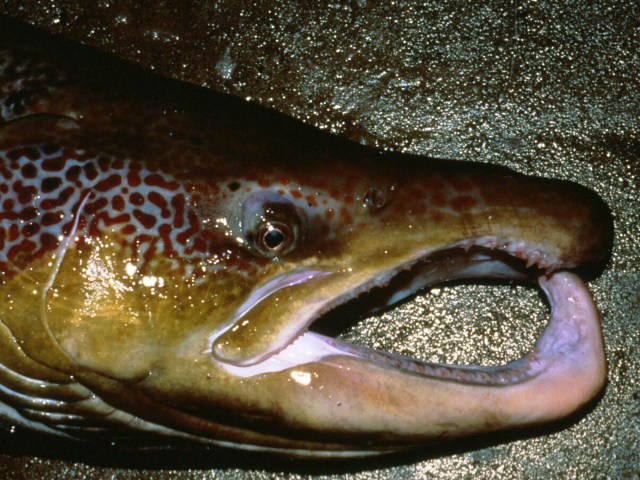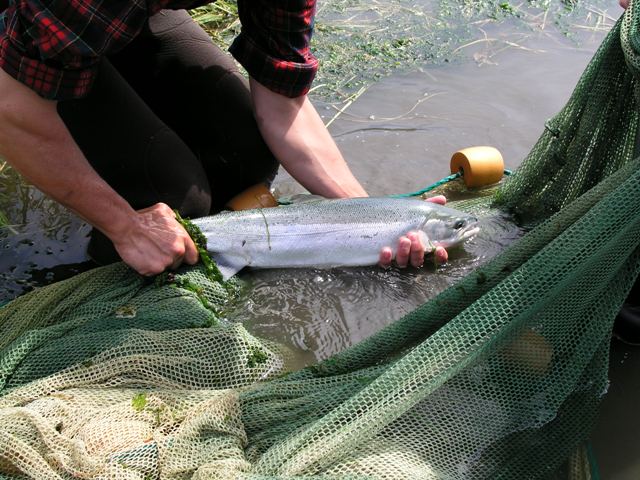Atlantic Salmon

Family: Salmonidae
Scientific name: Salmo salar
Description: Trout like body with a small head and pointed terminal mouth. Breeding males may develop a hook or kype on the tip of the lower jaw. Atlantic salmon from the sea are silvery on the belly and range from green to blue on their backs.
Habitat and distribution: Anadromous species. Lives in fresh water from hatching to around 2 years of age before migrating to the sea. This species occurs on both sides of the North Atlantic Ocean.
Diet: Young salmon which occur in freshwater feed mainly the larvae of aquatic insects. At sea, small salmon feed on plankton and large salmon feed on a fish including herring, alewives, smelt and capelin. The adults cease feeding before returning to freshwater to spawn.
Growth: Yolk sac fry hatch from salmon eggs in the gravel and stay there till their yolk sac is absorbed. The fry emerge from the gravel as 'alevins' and live in rapid flowing water till grow to around 65mm. At this size they are 'parrs' which vertical dark bands on their sides or 'parr marks'. After 2 to 3 years, the salmon become smolts and migrate out to sea. The largest sea run Atlantic salmon ever caught was 35kg.
Reproduction: In Canadian waters, salmon spawn in October in freshwater streams. The males develop a hook or kype on their lower jaw around this time. The female chooses a nesting site and digs out a nest or redd with her tail. A male a female pair will lay in the the nest side by side and release egg and sperm. Each pair will generally produce between 500-1300 eggs. The adults then return to the ocean or stay in the river till spring.
Predation: Salmon are preyed upon by a variety of animals. Young salmon in freshwater are preyed upon by kingfishers and mergansers and sometimes American eels. Salmon at sea have been found in the stomachs of seals, sharks and large fish.
Relation to man: The salmon is a highly prized sport and food fish. Declining wild populations have lead to the development of salmon aquaculture using hatcheries and cage-rearing. The global production of Atlantic salmon is approximately 555,543 tonnes and valued at $US 1.8 billion.
Interesting Facts: Some populations of salmon called Quananiche, are landlocked and cannot migrate to the sea. These populations generally do not grow as large as sea run salmon.
Images
 |
 |
 |
 |
 |
OSC Research
Fleming Lab - Nathan Wilke is studying the conservation biology of Atlantic salmon towards understanding adaptive traits differences for the management of endangered populations